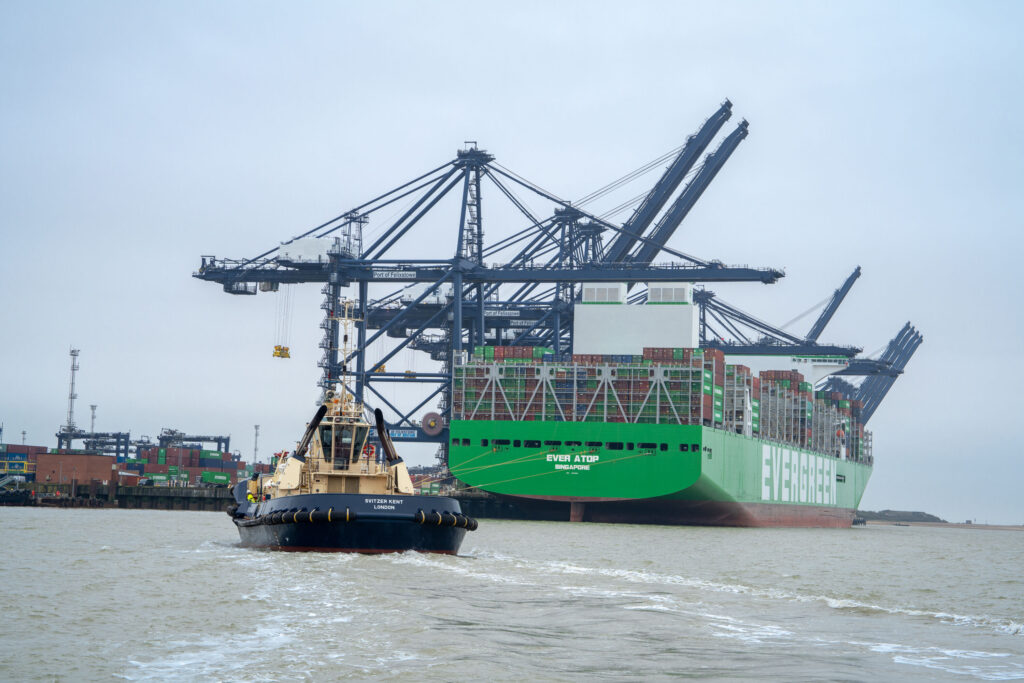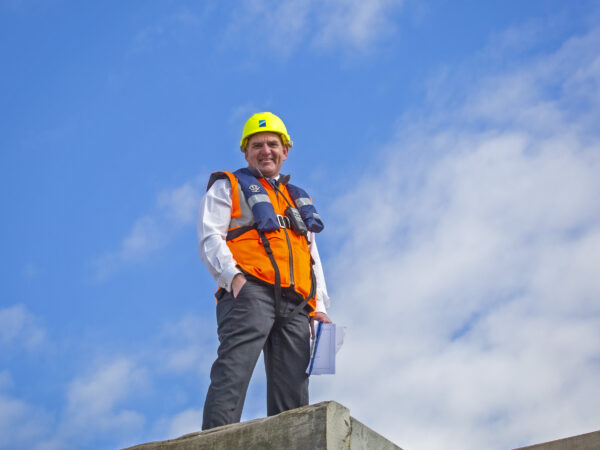Captain Ashley Parker is the Port Master for the Port of Felixstowe, Harwich International Port. Captain Parker has been working with us on our Ship to Ports Communications campaign and volunteered to share his view of what it is like for crew coming into to port and what information they receive prior / during a port visit. This is his story.
The Port of Felixstowe is the largest container port in the country, and handles the deepest, longest, widest container vessels currently afloat. Container ships are like buses – they have a schedule, a regular route and we see the same ships calling, so there is generally a crew member who has been here before and knows how to get ashore and where to go.
For every new ship calling we provide a welcome pack, which is renewed every year. This includes the Shipmasters’ Information Guide, which covers emergency procedures, safety rules, security, environmental requirements, etc. We also provide a copy of the Seafarers’ Centre Port Information Guide, which gives details on how to contact the Centre and call for a free minibus, a map of the local shops and attractions, and contact details of Welfare Organisations. We are fortunate in having an excellent Port Chaplain Julian Wong, supported by Stella Maris, who makes regular visits to ships alongside and provides help and support to ships crews. He is always very well received particularly so during the Covid pandemic and more latterly with the Ukraine conflict, where he was able to provide free SIM cards and put seafarers in touch with their families, who may have been dispersed away from their homes. We are also looking to recruit and train additional Ship Welfare Visitors to support Julian in his work.
For the sailor coming in to Felixstowe, the first contact with shore personnel is with VTS and the pilot station; the pilot will board about 15 miles out and guide the ship in to port. For the bridge team, the pilot is always a useful source of information about the port and how to get ashore, but their time on board is necessarily limited.
Their next visitor is likely to be our Marine Supervisor, who determines where the ship will berth, oversees the mooring arrangements and, once the ship is alongside, checks the accommodation ladder or gangway to ensure it is safely rigged and netted. He will also issue or renew our port welcome pack. The Ship’s agent may attend with mail, but this is not always the case. With (generally) ready access to internet and email, the days of ‘bluies’ and airmail letters are no more.
The crew can then expect a visit from our Port Chaplain or welfare visitor. For those crew who have the time or inclination to go ashore, they can call for the Seafarers Bus – either by their own mobile phone or by VHF. As a matter of safety we do not permit pedestrians on the quay, so the port funds the Seafarers Bus, driven by volunteers, to collect and deliver from ship to the Seafarers Centre and back. At the Centre they can play a game of pool or table football, meet sailors from different ships, buy sweets and souvenirs, access the internet to call home or download films for use on board and generally relax in different surroundings. There is also access to the seafront and the shops, restaurants and attractions that can be found in any seaside town. Sailors can often be seen coming back to their ships with that iconic staple of the seaside – take-away fish and chips.
Most ships have a notice board at the head of their gangway, stating when the ship is due to sail, what time shore-leave ends, and the next port. Due to the nature of the container vessel trade, there is very little down-time or lay-bys, and crews have to fit in their shore leave around their on-board watches. This is why a regular and rapid means of getting from ship to any shore attractions is imperative. It should be remembered that most crew members are foregoing their rest time to come ashore, so it has to be worthwhile and with no wasted time. This is also why the Port Chaplain and Welfare Visitors are so essential and should be supported and encouraged.
Seafaring can be a lonely and difficult career. The advent of regular and instant communications can be seen as both positive and negative. Positive in that the sailor can see, talk, connect to family at home, and negative for exactly the same reasons. If their family are having problems – sickness or accident, or even just missing their father, mother, wife or child – the seafarer is so far from home and powerless to make things better. The feeling of impotence can be enormous. Sometimes it is better not to know…
As a port, our main function is to facilitate the movement of goods and vessels, but we should never forget the men and women who serve on these ships and endure the isolation, hazards and perils of the deep blue sea.
Join Us
Find out more about the benefits of being a PSS member and how to apply.


